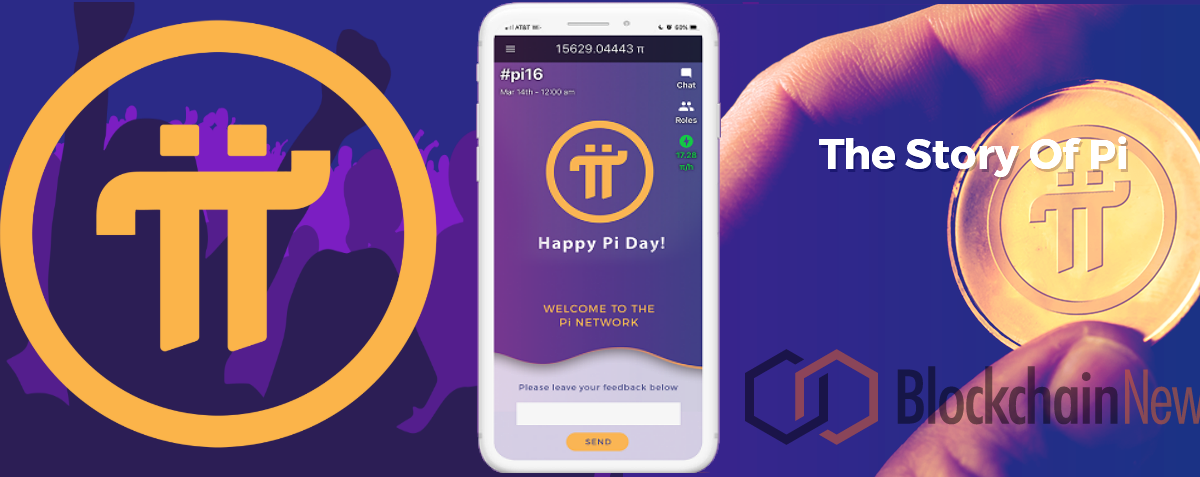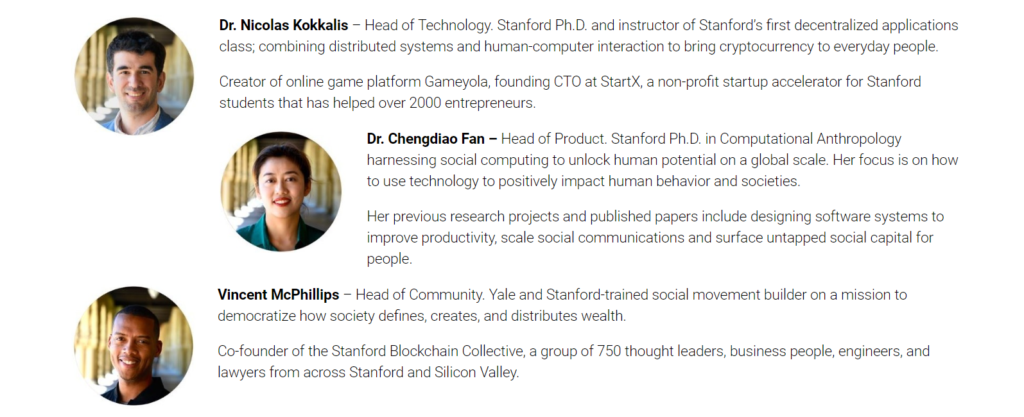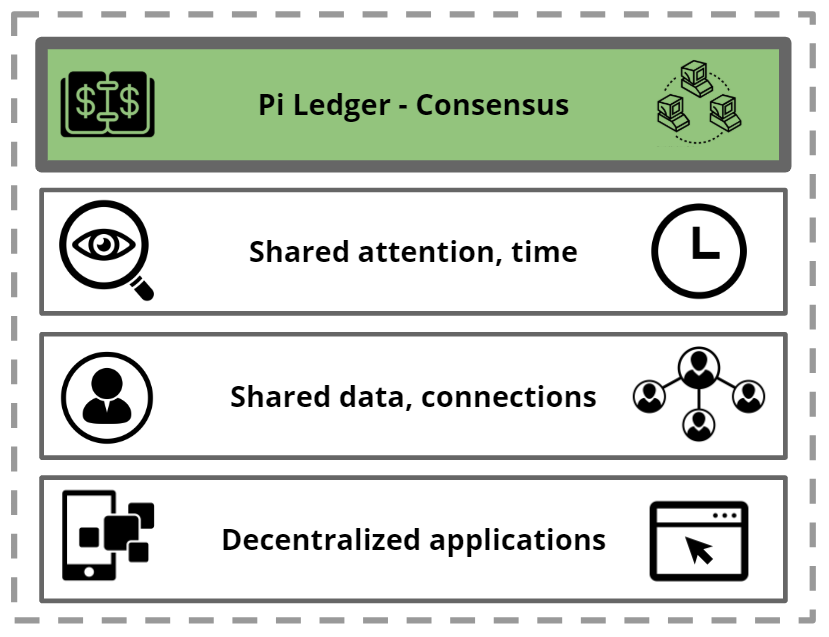Pi Network, a rapidly rising star in the blockchain world is close to reaching its first halving – to take place when half a million users are registered (currently at 450,000+).
The project’s mission is bold – to build the world’s most inclusive peer-to-peer marketplace, fueled by Pi, the world’s most widely used cryptocurrency. And create a smart contract protocol that is secured and operated by everyday people, not a concentration of whale miners like Bitcoin.
The Pi team have worked hard to build a platform that addresses many of the current problems with proof of work mining and cryptocurrency (energy wastage, centralization issues with cryptocurrency ownership and mining etc.) and the Pi Core Team has introduced a consensus algorithm that would also be extremely user-friendly and ideally enable mining on personal computers and mobile phones.
The core team includes Pi Head of Technology, Dr. Nicolas Kokkalis, a Stanford Ph.D. and instructor of Stanford’s first decentralized applications class, Dr. Chengdiao Fan, Head of Product is a Stanford Ph.D. in Computational Anthropology and Pi Head of Community Vincent McPhillip out of Yale and Stanford who is a co-Founder of the Stanford Blockchain Collective.
Pi is based on the Stellar Consensus Protocol (SCP) and an algorithm called Federated Byzantine Agreement (FBA).
See video for an explanation on how SCP and FBA work.
There are four roles Pi users can play, as Pi miners. Namely:
- Pioneer. A user of the Pi mobile app who is simply confirming that they are not a “robot” on a daily basis. This user validates their presence every time they sign in to the app. They can also open the app to request transactions (e.g. make a payment in Pi to another Pioneer)
- Contributor. A user of the Pi mobile app who is contributing by providing a list of pioneers he or she knows and trusts. In aggregate, Pi contributors will build a global trust graph.
- Ambassador. A user of the Pi mobile app who is introducing other users into Pi network.
- Node. A user who is a pioneer, a contributor using the Pi mobile app, and is also running the Pi node software on their desktop or laptop computer. The Pi node software is the software that runs the core SCP algorithm, taking into account the trust graph information provided by the Contributors.
The Pi Economic Model
Model Pi seeks to strike a balance between creating a sense of scarcity for Pi, while still ensuring that a large amount does not accumulate into a very small number of hands. They want to make sure our users earn more Pi as they make contributions to the network.
Pi’s goal is to build an economic model that is sophisticated enough to achieve and balance these priorities while remaining intuitive enough for people to use.
Pi’s economic model design requirements:
- Simple: Build an intuitive and transparent model Fair distribution: Give a critical mass of the world’s population access to Pi
- Scarcity: Create a sense of scarcity to sustain Pi’s price over time
- Meritocratic earning: Reward contributions to build and sustain the network
Token Utility is very interesting – as it’s about pooling and monetizing the members’ time online:
- Pi Ledger And Shared Trust Graph – Scaling Trust Across The Web
- Pi’s Attention Marketplace – Bartering Unutilized Attention And Time
- Pi’s Barter Marketplace – Build Your Personal Virtual Storefront
- Pi’s Decentralized App Store – Lowering The Barrier Of Entry For Creators
Governance
“Blockchain governance is not an abstract design problem. It’s an applied social problem.”
– Vlad Zamfir, Ethereum’s core developer
Until the network hits a critical mass of five million members, Pi will operate under a provisional governance model. This model will most closely resemble “off-chain” governance models currently employed by protocols like Bitcoin and Ethereum, with Pi’s Core Team playing an important role in guiding the development of the protocol.
Upon hitting five million members, a provisional committee will be formed based on previous contributions to the Pi Network. This committee will be responsible for soliciting and proposing suggestions from and to the wider community. It will also organize a series of on- and offline conversations where Pi’s members will be able to weigh on Pi’s long-term constitution.
The project is invite-only, feel free to use expathos in order to join the project and download the mobile app. Or click here.
- Blockchain Mining Project Pi Network Nears 500,000 Mobile App Miners – Reaching First Halving – September 26, 2019
- Tatatu Launches “Giving Back Generation” Social Awareness Vodcast Starring Selena Gomez – September 26, 2019
- KPMG Releases Free Study on How Blockchain-Enabled Tokenization Will Transform Commerce – September 25, 2019
- University of Cambridge Delivers New Blockchain Model To Improve Global Supply Chains – September 25, 2019
- Easywallet: 25,000 French Points of Sale Terminals to Accept Cryptocurrencies – September 25, 2019
- Global Blockchain Market is Expected to Reach USD 169.5 Billion by 2025 – September 25, 2019
- Deutsche Bank Pilots Blockchain Technology To Provide Global Beneficial Ownership Transparency Solution – September 24, 2019
- Canadian Company Kik Drops Messenger, Restructuring Kin for Almighty Battle with US SEC – September 24, 2019
- Securitize Raises US$14M – Round Led by Santander InnoVentures, MUFG, and Nomura Holdings – September 24, 2019
- Proxeus Goes Live: Building on Blockchain Without Code – September 24, 2019
- Bank for International Settlements Proposes “Embedded Regulation” for Blockchain Markets – September 24, 2019
- Cryptocurrency Forensic Firm Elementus Raises $3.5 Million – September 23, 2019
- ICObox Busted: US SEC Charges ICO Incubator and Founder for Unregistered Offering and Broker Activity – September 23, 2019
- J.P. Morgan’s Blockchain Fueled Cross-Border Payments IIN Grows to 300+ Banks – September 23, 2019
- R3 and Infosys Wrap up Global Trial of Blockchain Based Trade Finance – September 23, 2019
- European Commission Releases New Support Paper on Blockchain – Further Funding for Startups Encouraged – September 19, 2019
- Bitpay Opens Up Doors For Ethereum Payments – September 16, 2019
- Neufund Launches Blockchain-Driven Equity Token Sale for Retail Investors Out of Lichtenstein – September 16, 2019
- London Blockchain Accelerator Academy Looking for Partners – September 13, 2019
- Blockchain Startup Blockstack Raises a Whopping $23 Million In SEC-Qualified Reg A+ Token Offering – September 12, 2019
Also published on Medium.







